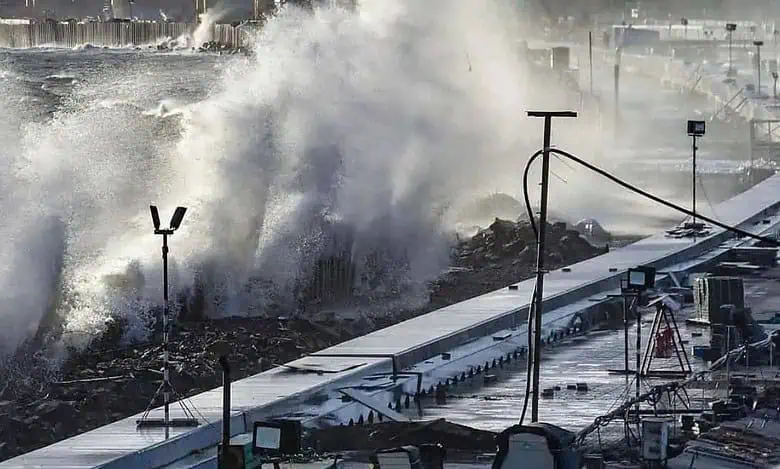A 3.7 magnitude quake hit Haryana’s Jhajjar on July 11, triggering tremors across Delhi‑NCR for the second day in a row. Authorities say it’s likely an aftershock but urge calm.
Delhi‑NCR Jolted Again: Earthquake Tremors Felt for the Second Day in Two Days
An Overlooked Risk Becomes Real
On the evening of July 11, 2025, residents across Delhi and the National Capital Region (NCR) were startled by tremors—this time triggered by a 3.7-magnitude quake whose epicentre lay near Jhajjar in Haryana. It occurred at 7:49 PM, at a relatively shallow depth of 10 km, causing buildings to shake and pulses to quicken.
Shockingly, this was the second quake in two days—following a 4.4-magnitude event that hit the same epicentre on July 10 around 9:04 AM.
The Sequence: Two Quakes, One Region
| Date | Magnitude | Time | Epicentre | Depth |
|---|---|---|---|---|
| July 10 | 4.4 | ~9:04 AM | Jhajjar, Haryana | 10 km |
| July 11 | 3.7 | ~7:49 PM | Jhajjar | 10 km |
Both quakes were shallow—a factor contributing to their strong impact across the wider metro region. The shocks were widely felt in Delhi, Gurugram, Noida, Bahadurgarh, Rohtak, and surrounding districts.
What the Experts Say: Natural Stress Relief
The National Center for Seismology (NCS) suggests the 3.7 quake is likely an aftershock of the earlier, stronger tremor. The region falls under a seismically active zone—on the boundary between the Delhi–Haridwar Ridge and the Mahendragarh–Dehradun fault.
Such aftershocks are normal seismic responses: the earth “relaxing” after a release of pressure.
Still, experts emphasize that while there is no reason for panic, vigilance and preparedness are essential.
How Residents Experienced It
- Metro riders reported brief stoppages in train services on the morning of July 10.
- Thousands rushed out of buildings—both times—seeking safety in open spaces.
- In offices and homes, furniture shook; some experienced short-lived power fluctuations.
- Social media saw flood of posts describing the experience as “scary,” with analogies to iconic scenes from pop culture like Squid Game.
Another quake of 4.0 magnitude struck near Dhaula Kuan back in February, underscoring a pattern of repeated seismic activity in this Zone IV region of high seismic risk.
Is This a Sign of a Bigger One?
Historical data shows hundreds of quakes (including 4.6 magnitudes) in the Delhi–Jhajjar region since 1993. While the area hasn’t recorded a magnitude-5+ quake in over a decade, it lies perilously close to Himalayan tectonics and maintains active fault lines.
- The July 10 event and subsequent aftershock fall within expected patterns.
- NCS experts caution that while unlikely, a larger quake cannot be ruled out entirely.
Residents are urged to follow safety protocols, secure furniture, and remain ready.
Safety Measures in Focus
Authorities have reminded city dwellers of crucial preparedness steps:
- Drop, Cover, Hold On during tremors, staying clear of heavy furniture or glass.
- Evacuate tall buildings carefully, prioritizing staircases over lifts.
- Stay outdoors until the all-clear, as aftershocks may follow.
- Maintain emergency kits with essentials like water, food, first aid supplies, and a flashlight.
- Check and secure large, heavy objects in homes and offices.
Building codes in Delhi-NCR are being reviewed to ensure structures remain resilient to tremors.
Urban Stress & Civic Response
While summer rains often cause tremors in certain zones, repeated quakes this close together have intensified public anxiety. Civil agencies are doubling down on drills—for schools, hospitals, and corporate centres—while emergency services conduct mock rehearsals to ensure quick and controlled response.
Long-Term Implications for Delhi-NCR
- Urban Planning: New-age building standards and earthquake-resistant design will likely gain traction.
- Citizen Awareness: Richer public understanding of earthquake safety and low-cost mitigation can save lives.
- Monitoring Infrastructure: NCS and geologists are reinforcing seismic monitoring networks across the NCR.
The Last Shake
While the recent quakes are not catastrophic, they serve as a stark reminder that Delhi-NCR sits on a restless semiconductor, its fault lines alive with latent energy. These events underscore the vital need for preparedness, infrastructure resilience, and public awareness.
For now, tremors seem to be nature’s way of balancing pressure underground. But each shake reminds us: in a city always on the move, sometimes it must pause—and remember how fragile our footing truly is.
Also read: Detective Ujjwalan OTT Release: Dhyan Sreenivasan’s Quirky Thriller Lands on Netflix
Last Updated on Saturday, July 12, 2025 3:45 pm by Aaron T



